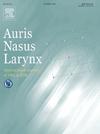联合局部皮瓣置入和负压伤口疗法治疗危重的气管周围咽瘘。
IF 1.6
4区 医学
Q2 OTORHINOLARYNGOLOGY
引用次数: 0
摘要
目的:气管造口周围咽瘘(PCF)是指由于皮肤缺损导致 PCF 与气管造口直接相连,是全喉或咽喉切除术后最棘手的并发症之一。气管造口周围 PCF 可因唾液直接渗入气管造口而引起致命的并发症,包括重症肺炎或颈动脉喷血。我们的目的是评估我们的新型微创局部皮瓣置入和负压伤口疗法(NPWT)联合方法在气管造口周围 PCFs 的管理和保守闭合中的实用性:我们回顾性地纳入了2015年7月至2021年9月在本院及附属医院发生气管口周围PCF的患者。所有术后 PCF 最初都进行了适当的伤口床准备。随后,局部隆起一小块健康的下颈部皮肤瓣,并转移至 PCF 前方,以替代气管口周皮肤缺损。皮瓣为薄膜敷料的粘贴提供了足够的表面,并有助于在 NPWT 过程中实现气密性密封。在确认局部皮瓣与气管粘膜缝合牢固后,我们开始了 NPWT。在气管口周围皮瓣上使用柔性水胶体敷料,并在柔性水胶体敷料和周围颈部皮肤上放置薄膜敷料。我们将 NPWT 泡沫浅插入瘘道,并施加负压(73.5-125 mmHg)。NPWT 一直持续到 PCF 闭合或变得很小,以至于唾液渗漏极少,可以用常规加压敷料来处理:我们共收治了六名患者[男性,n = 6;平均年龄 66.5 岁(57-80 岁)]。NPWT 平均使用 18.2 天(2-28 天不等)。在 NPWT 过程中,发生过一次漏气(2 例)、几次漏气(2 例)或完全没有漏气(2 例)。在所有患者中,瘘管在 NPWT 开始后平均 28.2 天(15-55 天)内完全闭合,没有患者需要进一步手术治疗。治疗期间没有出现致命的并发症(如重症肺炎):结论:我们所采用的局部皮瓣置入和 NPWT 联合疗法能有效控制唾液吸入,加速伤口愈合,从而使所有患者的瘘管都能保守闭合。我们认为,局部皮瓣置入和 NPWT 联合疗法应被视为顽固性气管口周围 PCF 的一线治疗方法。本文章由计算机程序翻译,如有差异,请以英文原文为准。
Combined local flap placement and negative-pressure wound therapy for the management of critical peritracheostomal pharyngocutaneous fistula
Objective
Peritracheostomal pharyngocutaneous fistula (PCF), a direct connection between the PCF and tracheal stoma due to a skin defect, is among the most problematic complications after total laryngectomy or pharyngolaryngectomy. Peritracheostomal PCFs can cause lethal complications, including severe pneumonia or carotid blowout, secondary to salivary leakage directly into the tracheal stoma, and their management is challenging without early invasive surgical closure. We aimed to evaluate the utility of our novel and minimally invasive combined local skin flap placement and negative-pressure wound therapy (NPWT) method for the management and conservative closure of peritracheostomal PCFs.
Methods
We retrospectively enrolled patients who developed a peritracheostomal PCF from July 2015 to September 2021 at our institution and affiliated hospitals. Postoperative PCFs were all initially managed with appropriate wound bed preparation. Subsequently, a small local flap of healthy, lower neck skin was elevated and transferred anterior to the PCF to replace the peritracheostomal skin defect. The flap served to provide a sufficient surface for film dressing attachment and facilitated airtight sealing during NPWT. We initiated NPWT after confirming the local skin flap was firmly sutured to the tracheal mucosa. A flexible hydrocolloid dressing was applied to the peritracheostomal skin flap, and a film dressing was placed on the flexible hydrocolloid dressing and surrounding cervical skin. We inserted the NPWT foam shallowly into the fistula tract and applied negative pressure (73.5–125 mmHg). NPWT was continued until the PCF was closed or became so small that salivary leakage was minimal and could be managed by conventional compression dressings.
Results
We enrolled six patients [male, n = 6; mean age, 66.5 years (range, 57–80 years)]. NPWT was applied for an average of 18.2 days (range, 2–28 days). During NPWT, air leakage occurred once (2 cases), only a few times (2 cases), or not at all (2 cases). In all patients, complete fistula closure was achieved in an average of 28.2 days (range, 15–55 days) after the start of NPWT, and no patient required further surgical intervention. There were no lethal complications (e.g., severe pneumonia) during treatment.
Conclusion
Our method of combined local flap placement and NPWT enabled effective management of salivary aspiration and accelerated wound healing, which allowed conservative fistula closure in all patients. We believe combined local flap placement and NPWT should be considered a first-line treatment for intractable peritracheostomal PCF.
求助全文
通过发布文献求助,成功后即可免费获取论文全文。
去求助
来源期刊

Auris Nasus Larynx
医学-耳鼻喉科学
CiteScore
3.40
自引率
5.90%
发文量
169
审稿时长
30 days
期刊介绍:
The international journal Auris Nasus Larynx provides the opportunity for rapid, carefully reviewed publications concerning the fundamental and clinical aspects of otorhinolaryngology and related fields. This includes otology, neurotology, bronchoesophagology, laryngology, rhinology, allergology, head and neck medicine and oncologic surgery, maxillofacial and plastic surgery, audiology, speech science.
Original papers, short communications and original case reports can be submitted. Reviews on recent developments are invited regularly and Letters to the Editor commenting on papers or any aspect of Auris Nasus Larynx are welcomed.
Founded in 1973 and previously published by the Society for Promotion of International Otorhinolaryngology, the journal is now the official English-language journal of the Oto-Rhino-Laryngological Society of Japan, Inc. The aim of its new international Editorial Board is to make Auris Nasus Larynx an international forum for high quality research and clinical sciences.
 求助内容:
求助内容: 应助结果提醒方式:
应助结果提醒方式:


